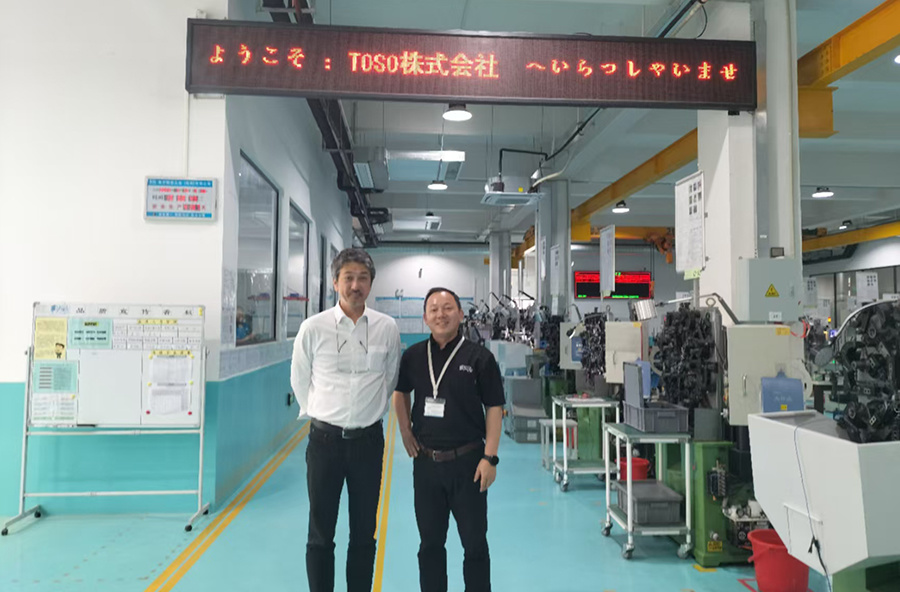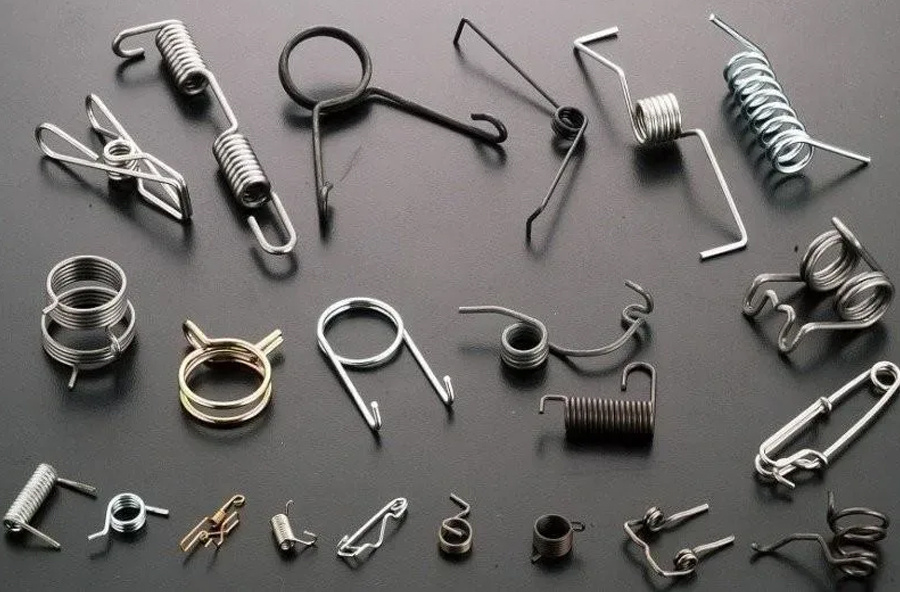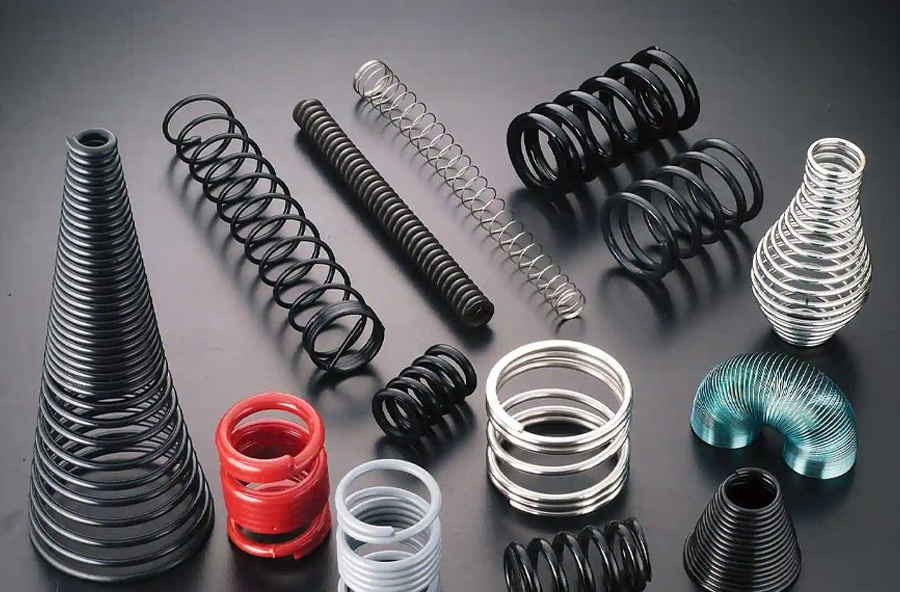The effectiveness of developing spring machine accessories
2021-11-12
The main shaft of the crusher is stationary, only supporting the spherical tiles to withstand the crushing force. Due to the stationary spindle of the crusher and the eccentric sleeve transmitting crushing force, this structure can withstand large crushing forces and is very suitable for fine and ultrafine crushing, as the crushing force of ultrafine crushing is very large. It is expected that the particle size of its product (for ultrafine grained lining plates) can reach 50 ^ 80% in an open circuit of one 5m2 (depending on the properties of the material).
When the crusher is in operation, the electric motor drives the eccentric shaft sleeve to rotate through a horizontal shaft and a pair of bevel gears. The axis of the crushing cone rotates under the pressure of the eccentric shaft sleeve, causing the surface of the crushing wall to sometimes approach and sometimes leave the surface of the rolling mill bowl, thereby continuously squeezing and bending the ore in the crushing chamber and crushing it.
The slight difference from conventional springs is that the spring itself is irregular, with bending and a large number of complex angle designs And the manufacturing and processing techniques also have relatively high requirements, as well as equipment requirements Usually it is a computer machine winding Due to the large number of winding angles and bends, the production speed is slow Due to its complexity, the production and processing of irregular springs often represent a company's technological level.
The torsion spring machine is a relatively high-precision spring accessory. Ordinary spring machines cannot meet the 1800 degree processing requirements for producing torsion springs. Generally, universal spring machines are used for the production of torsion springs both domestically and internationally, with high accuracy. Universal spring machines can achieve different angles and shapes of forming and positioning.
Generally speaking, the manufacturing materials of springs should have high elastic limit, fatigue limit, impact toughness, and good heat treatment performance. Commonly used materials include carbon spring steel, alloy spring steel, stainless spring steel, as well as copper alloy, nickel alloy, and rubber. The manufacturing methods of springs include cold rolling method and hot rolling method. For spring wires with a diameter less than 8 millimeters, the cold rolling method is generally used, while for those larger than 8 millimeters, the hot rolling method is used. Some springs need to be subjected to strong pressure or shot blasting treatment after production to improve their load-bearing capacity.
The technological accumulation of the coil spring machine has gradually matured, and various equipment manufacturers have established their own professional research and development departments, and even cooperated with some universities and research institutes in the field of wire forming to develop the latest equipment. The combination of the latest technology and control technology of the German spring machine leader WAFIOS has reached an unparalleled height. The unique operating control system and exclusive patented structure of the equipment can be called the Mercedes Benz S600 or BMW 7 Series in the spring machine.
Keywords:
Related News
On May 13th, TOSO visited our company for guidance
2025-05-13
Materials and Manufacturing Process of Springs
2022-07-28
Detailed Explanation of Heat Treatment Process Optimization for Spring Steel
2022-01-10





